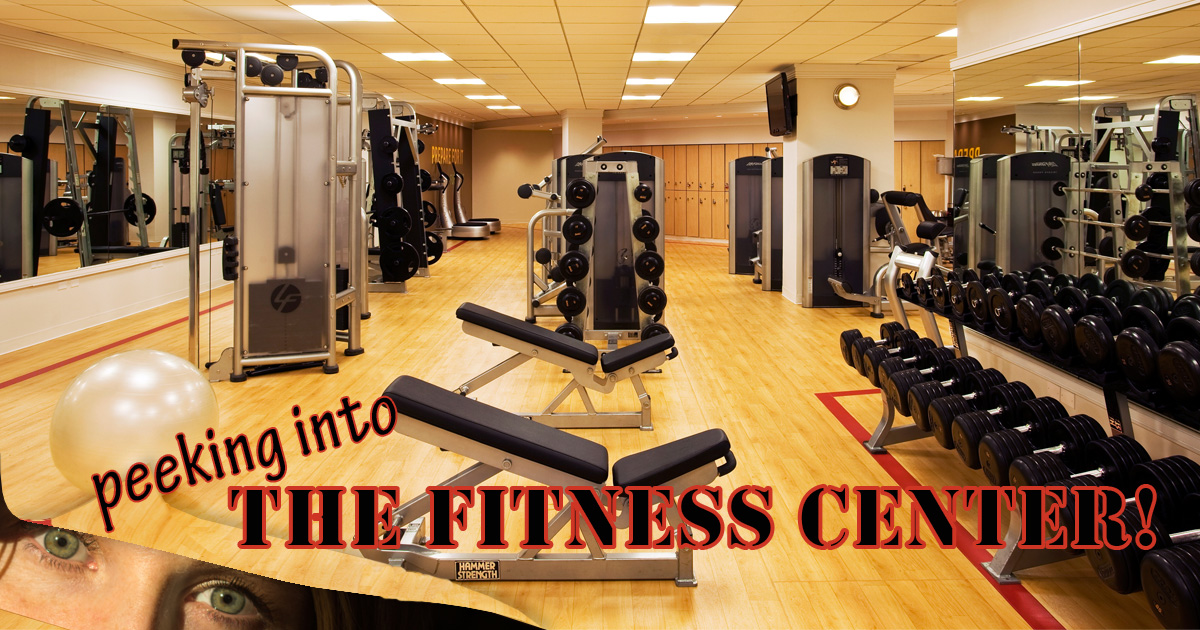It seems like a good idea; a fitness center in your building. It’s so convenient! Unless of course, you want some peace and quiet. Are workout spaces hiding where you live or work? Do they generate much noise? Is there anything that can be done to keep them under control? Once you start peeking into the fitness center, you start to find answers to those questions.
Fitness Room Lurking in Your Building
If you shop for apartments or condominiums, you’ll find an in-house fitness room listed in the amenities. New gyms in retail centers seem to pop up every day. Healthcare buildings that include physical therapy facilities are more commonplace. Even office buildings are courting exercise studios to provide a benefit for employees. We’re getting more requests to help with small in-home workout spaces. Clearly, it’s not a fad that’s going away. Fitness centers are going to be part of the landscape in a variety of environments and there are some things to keep in mind before you decide to include one in your building, or move in next door. There might be a fitness room lurking in your building.
Really, Really Loud
Let’s cut to the chase here. Dropping weights, running, and jumping creates noise and vibration that can radiate through the floor-ceiling assemblies, building structure, and walls. Treadmills, elliptical machines, and stationary bikes generate noise and vibration. An exercise class, playing music at 95dBA with an instructor shouting at (encouraging) the participants above that level is really, really loud. What else is that loud? A Jackhammer at 50’ away, a subway train at 200’ away, aircraft, jets, and bulldozers can be about 95dBA. OSHA requires hearing protection at 85dBA because 90 – 95dBA is the level at which sustained exposure may result in hearing loss. Let’s agree that a gym can generate noise levels that can range from annoying to downright harmful. That’s not to say that they don’t belong in your building, but there are some important considerations.
Fit-Out for Fitness Centers
Acoustics By Design’s Director of Acoustics chaired the InterNoise 2015 technical session, “Fitness Center Noise and Vibration Control” (Melinda Miller). Firms presented papers on topics including: space planning, floating floor design, heavy impact isolation, a case study of small fitness rooms, and excessive sound levels from sound systems. Depending on the needs and style of exercise, there are ways to plan ahead to help prevent fitness center noise problems.
- Assume it’s going to be loud
- Be aware of neighboring activities
- Avoid locating near quiet spaces
- Utilize slab-on-grade whenever possible
- Have existing structures tested and get recommendations before renovating or starting a fit-out for a fitness center
We were recently approached by a fitness center, looking at a potential space in an existing strip-mall. They were concerned about keeping their space isolated from the doctor’s office next door. They chose not to take on the project of having the demising wall and structure tested. A couple of months later, a construction company called about the same space. They also passed on testing and recommendations for the construction project. Finally, with the gym drowning out the medical conversations next door, the property owner called to find out how to resolve the problem.
Fixing the Fitness Noise
If you already have a fitness center in your building there are ways to help reduce the noise generated in them. Some facilities have tried a variety of mats on the floors, isolating the equipment, or policies and limits on the music volume. Those can help a bit, but you’ll want to prepare for a construction project. If the gym isn’t located on a concrete slab on grade, you’re going to need to consider changing the floor-ceiling. Even for slab on grade locations, a floating floor may be required to reduce impact noise and vibration from heavy weight drops. If there are adjacent spaces that prefer a quiet environment, like corporate offices, spas, healthcare, bookshops, or rooms where people might be trying to sleep, having the walls, floors, ceilings, and structures tested will help you figure out what needs to be done.
Expert Advice
Getting expert advice from an independent acoustical consultant, like Acoustics By Design, can help you with unbiased recommendations. Our consultants provide acoustical consulting services to architects, engineers, facility directors, municipalities, and building owners. Our team includes acoustical consultants, acoustical engineers, noise consultants, and vibration consultants. Our firm also includes an integrated team of audio-visual consultants who design audio, video, theatrical lighting, and technical systems, and integrate them with the native acoustical environment. We can provide recommendations to help control the unwanted noise transferring from one space to another, and ways to keep the sound system in check. Our experience consulting on projects including fitness centers in hospitals, malls, multi-family, multi-use, retail, and residential spaces translates into providing you with the best solutions for new or renovation projects.
